In the article below, we present the topic of controlling the temperature of water heating using valves with a thermostatic head. It is a simple system that has been used for a long time, but better understanding of its elements and how they work will allow you to better select devices to suit your needs, or better use the devices you already have. The point is not to reduce the comfort of your home by reducing heating costs.
A typical central heating radiator has valves: supply and return, and on the supply valve a knob-head that controls the heating water supply. If it is only a knob, we are talking about a radiator valve, if the knob contains a sensor and a valve control element, we are dealing with a thermostatic head.
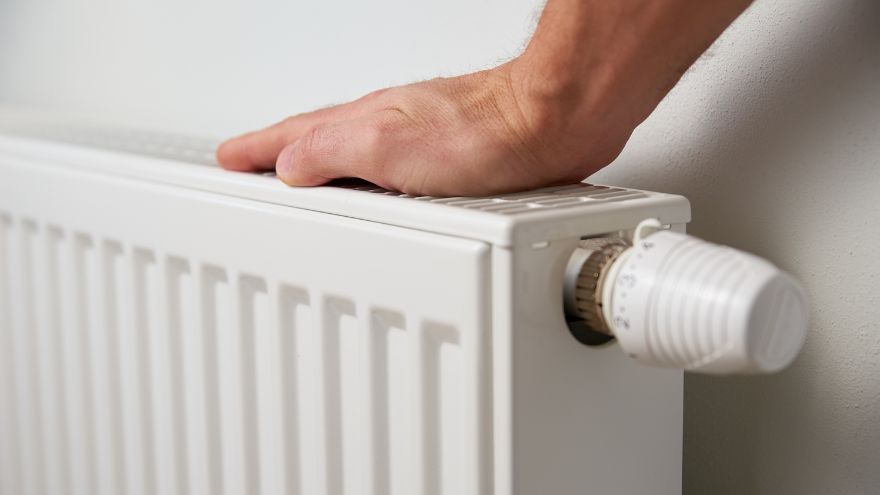
Check out thermostatic radiator valves at the Onninen wholesaler
What is a radiator valve?
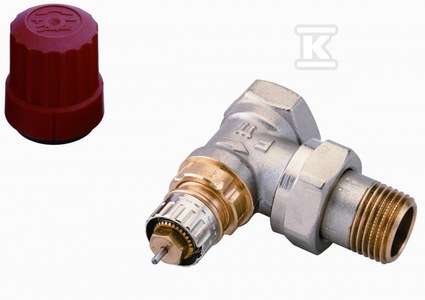 There are two types of valves in the radiator: a valve on the water supply side of the radiator and a drain (return) valve through which the cooled water returns to the heating water circuit. A radiator feed valve is a simple device that regulates the flow of hot water into and out of the radiator, which affects the room temperature. There are two types of valves: manual and thermostatic radiator valves (TRV). Currently, the use of thermostatic valves in multi-family buildings is required by building regulations. Thermostatic valves can be installed on all types of water radiators, without the need for special adaptations.
There are two types of valves in the radiator: a valve on the water supply side of the radiator and a drain (return) valve through which the cooled water returns to the heating water circuit. A radiator feed valve is a simple device that regulates the flow of hot water into and out of the radiator, which affects the room temperature. There are two types of valves: manual and thermostatic radiator valves (TRV). Currently, the use of thermostatic valves in multi-family buildings is required by building regulations. Thermostatic valves can be installed on all types of water radiators, without the need for special adaptations.
How to distinguish a manual valve from a thermostatic valve (TRV)?
Manual valves usually have a small unmarked knob with no mechanisms inside, while thermostatic radiator valves have markings such as a scale, plus and minus (or on/off), indicating the direction in which it should be turned to open or close a sometimes also visible or hidden elements limiting the minimum and maximum settings. Replacing the manual valve with a valve with a thermostatic head will allow you to adjust the room temperature to ensure better comfort, energy savings and reduction of CO2 emissions.
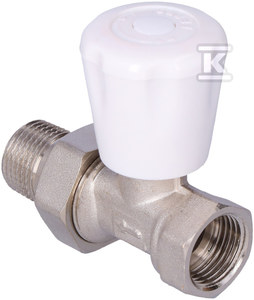 In addition to the function of cutting off the flow from the radiator, the return valve is also often used to limit the flow - hydraulic balancing - so that all radiators in the system heat up at approximately the same rate. In other words, the radiator closest to the boiler would heat up faster than the one placed at the other end of the house, so the balancing valves should be opened more and more the further the radiator is from the boiler (heat source). The balancing function is often also implemented in the supply valve through the so-called "pre-setting", which is a type of orifice limiting the flow through the valve.
In addition to the function of cutting off the flow from the radiator, the return valve is also often used to limit the flow - hydraulic balancing - so that all radiators in the system heat up at approximately the same rate. In other words, the radiator closest to the boiler would heat up faster than the one placed at the other end of the house, so the balancing valves should be opened more and more the further the radiator is from the boiler (heat source). The balancing function is often also implemented in the supply valve through the so-called "pre-setting", which is a type of orifice limiting the flow through the valve.
Recently, more advanced valve solutions have also appeared - the so-called "dynamic thermostatic valves" or "pressure-independent thermostatic valves", where the flow limitation is not set once but changes dynamically depending on the pressure in the heating system. This excludes the impact of pressure fluctuations on the balancing of the heating system, which ensures higher comfort of use and additional savings. The element necessary for the operation of the thermostatic valve is the thermostatic head.
What is a thermostatic head?
A thermostatic head is a device mounted on a radiator that allows you to automatically regulate the flow of hot water to the radiator. The head controls the thermostatic valve and increases or decreases the flow of hot water to the radiator depending on the ambient temperature. The valve is open until the room reaches the desired temperature. If the temperature drops again, the valve will open again.
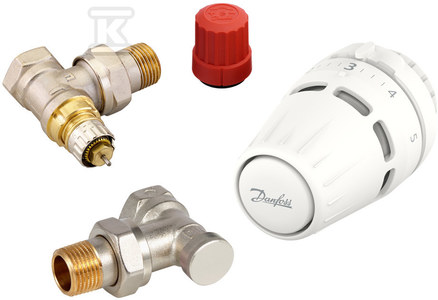 The main element of the thermostatic head is the "engine" that controls the valve, containing a specific thermostatic liquid or gas ("gas head"). This liquid expands or contracts depending on the room temperature. If the room temperature is higher than the temperature set (e.g. 20°C) on the valve, the thermostatic liquid will increase in volume, causing a change in the length of the cylindrical regulator in the form of a bellows filled with liquid or gas, closing the valve, which in turn reduces the flow of hot water to the radiator. If the ambient temperature is lower than the set temperature, the reverse process occurs and the valve opens and the radiator heats up.
The main element of the thermostatic head is the "engine" that controls the valve, containing a specific thermostatic liquid or gas ("gas head"). This liquid expands or contracts depending on the room temperature. If the room temperature is higher than the temperature set (e.g. 20°C) on the valve, the thermostatic liquid will increase in volume, causing a change in the length of the cylindrical regulator in the form of a bellows filled with liquid or gas, closing the valve, which in turn reduces the flow of hot water to the radiator. If the ambient temperature is lower than the set temperature, the reverse process occurs and the valve opens and the radiator heats up.
Advantages of thermostatic heads
Thermostatic heads help reduce losses and improve comfort by stabilizing the temperature in each room according to the resident's requirements. Thermostatic valves are currently required by building regulations, which in multi-apartment buildings impose the obligation to use heads with a minimum temperature limit of 16°C so that an empty apartment cannot have its heating completely closed, as this could result in cooling of the premises and such unfavorable phenomena as the accumulation of moisture, growth of fungi or mold in the walls.
Correct use of thermostatic heads
The thermostatic head should not be covered because, as a temperature sensor, it should detect the temperature inside the room and not in a closed space next to the radiator. Remove anything that prevents normal air circulation around the radiator (curtains, furniture, radiator covers, shelves). Remove any heat sources (such as stoves or stoves) from the vicinity of the head. If the location of the head is very unfavorable, you can use a head with a remote sensor that can be moved away from the head knob by the length of the connecting capillary - usually 1 - 2 meters.
Close the valve when you have doors or windows open, by keeping the windows open and turning on the heating system at the same time, you are wasting a lot of heat and money! In summer, leave the head fully open at the highest temperature position to avoid scale formation and blocking of the thermostatic valve. In rooms that are not in use or when you leave the house for a few days, leave the head open at half the range.
What should you consider when choosing a radiator thermostat for your home?
When purchasing new thermostats for radiators or underfloor heating, the decision may be difficult due to the richness of the offer on the market. Below are the most important selection factors that should be taken into account when making a decision.
- Your system, type or brand of thermostats - when supplementing the installation, it is worth considering the same brand or type of connections. Especially with remotely controlled electronic heads .
-
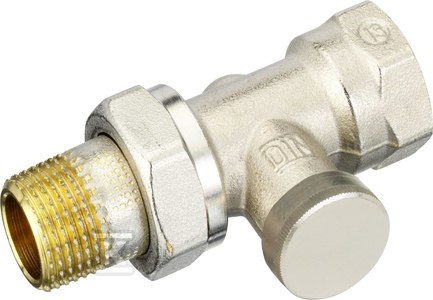 Type of connection to the radiator - the most popular systems in Poland are: Danfoss RTD-N (produced until 2010, but there are substitutes for this system on the market) Danfoss RA-Click; M30x1.5; M28x1.5 – when replacing heads, new heads must match the existing valves.
Type of connection to the radiator - the most popular systems in Poland are: Danfoss RTD-N (produced until 2010, but there are substitutes for this system on the market) Danfoss RA-Click; M30x1.5; M28x1.5 – when replacing heads, new heads must match the existing valves. - Quality of regulation – important parameters are: response speed, regulation accuracy (hysteresis),
- Additional functions - protection against freezing, remote measurement, and in electronic heads also detection of an open window, "holiday" function, protection against valve blockage, programming options,
- Aesthetics – colors, shape, decorative finish matching the interior,
- Ergonomics - clear markings, scale in degrees C, setting limits, for electronic heads: possibility of programming, remote adjustment,
- Finally, also the price - if we have a limited budget, this may be an important determinant, but looking at the above factors - the initial purchase price is not everything - heads offering better regulation over 10-15 years of operation may turn out to be much cheaper in using the home heating system .
If in doubt, it is always worth seeking advice from a professional - an installer or a qualified seller.